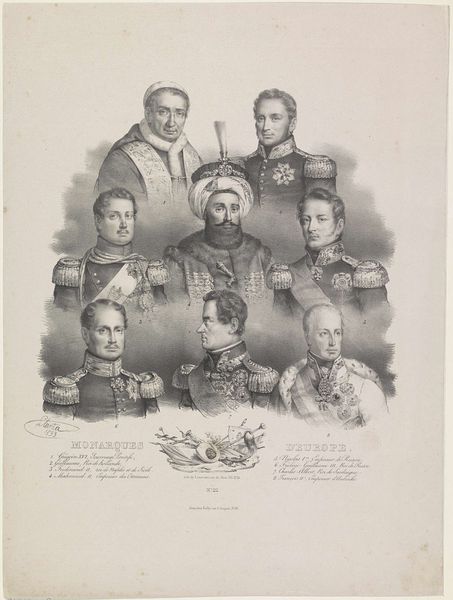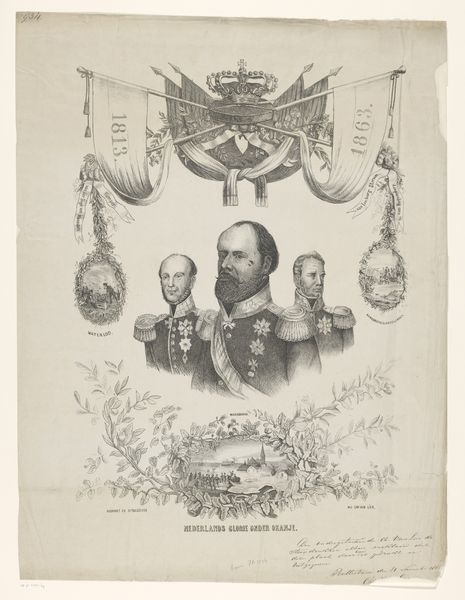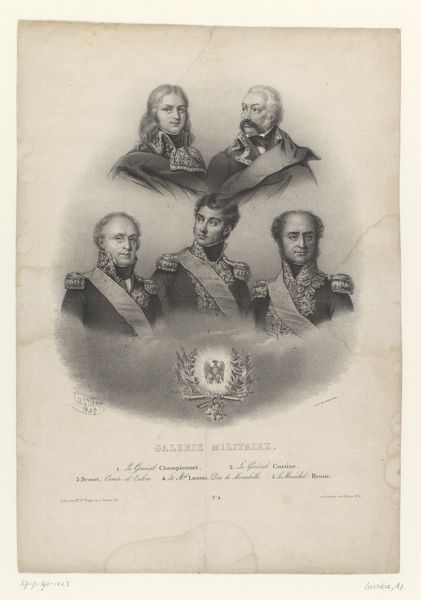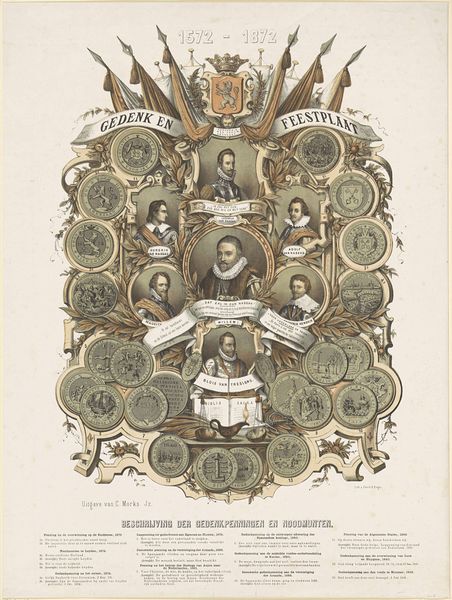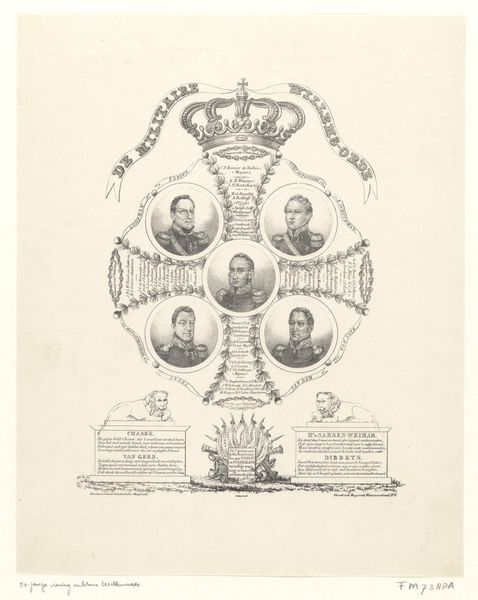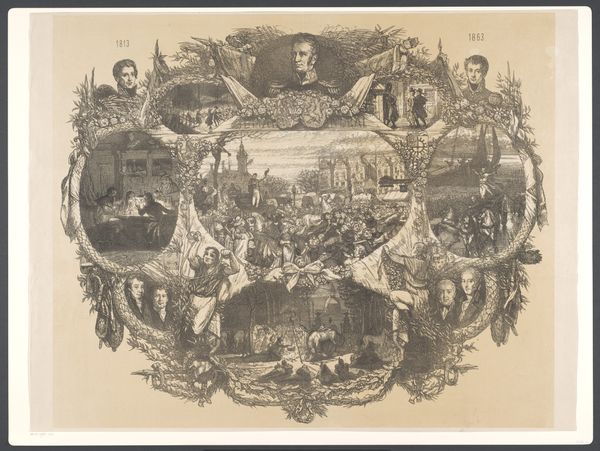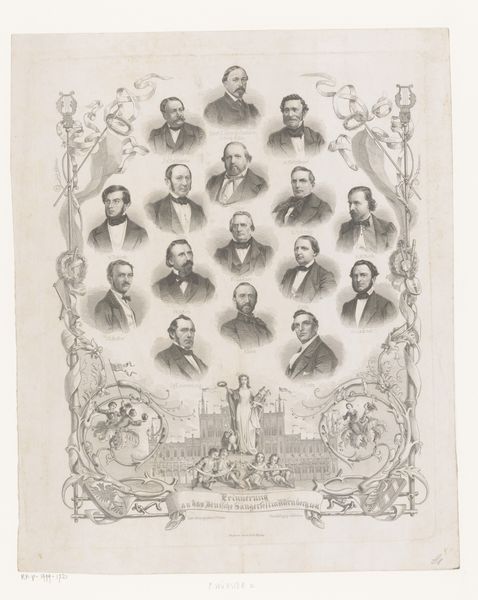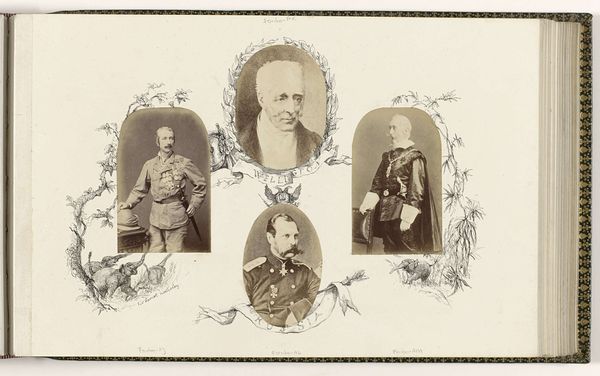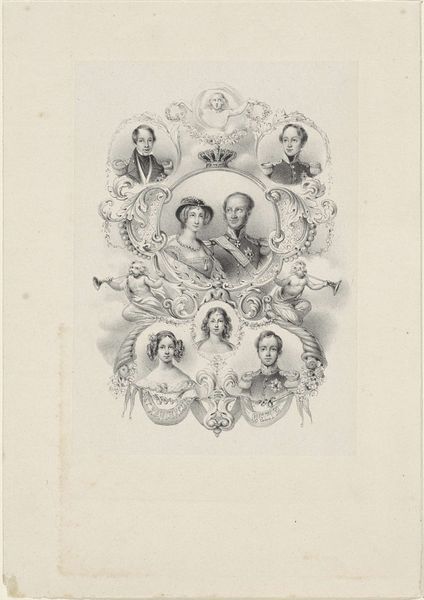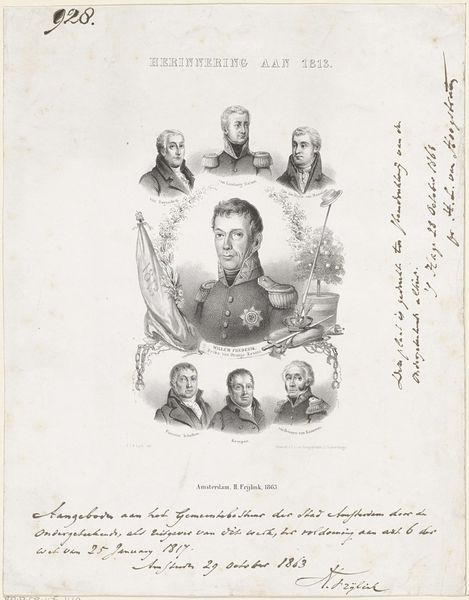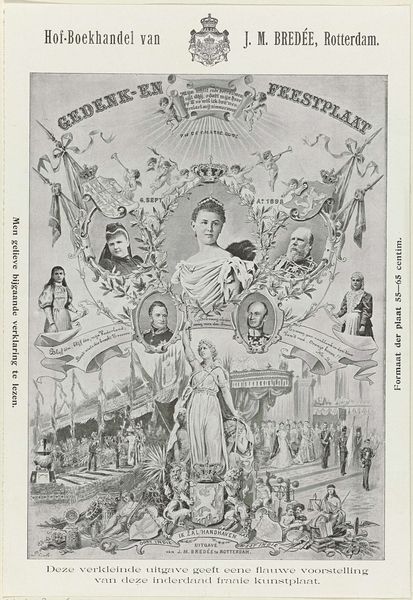
Gedenkplaat bij 50-jarige herdenking van de Slag bij Waterloo, 1865 1865
0:00
0:00
anthonycorneliscramer
Rijksmuseum
Dimensions: height 704 mm, width 531 mm
Copyright: Rijks Museum: Open Domain
Curator: This is a commemorative print created by Anthony Cornelis Cramer in 1865, titled "Gedenkplaat bij 50-jarige herdenking van de Slag bij Waterloo," or, translated, "Commemorative plaque for the 50th anniversary of the Battle of Waterloo." Editor: The layout strikes me as deliberately hierarchical, a symbolic rendering of power dynamics, wouldn't you agree? The arrangement in circular vignettes ascending from Napoleon suggests a ladder of authority. Curator: Precisely. Observe the careful placement of figures like Wellington and Blücher in their own cartouches—each a study in contrast. Consider how Cramer uses light and shadow to emphasize their resolve. It seems less about likeness and more about projecting strength. Editor: Below them, Napoleon appears to be the keystone for an assemblage of weaponry. It suggests a symbolic representation of defeat or conquest. The eagle, his emblematic creature, faces downward in an inelegant fashion. This visual grammar feels deliberate and heavy. Curator: It's interesting you point that out. Notice how above Napoleon, the other vignettes showcase noble attributes and symbols of victory. In particular, Willem Frederik, flanked by triumphant lions, is quite compelling! I see the print more as a formal representation of power and victory in the classical mode of history painting, a symbolic display. Editor: To me, those lions also evoke the Dutch national identity rising triumphant after the battle. What a difference 50 years can make. In the historical imagination, it is possible to neutralize even bitter memories by monumentalizing them. Curator: That interplay of formal portraiture and symbolic arrangement is indeed potent. There is such visual complexity that warrants multiple viewings. Editor: I agree completely. This engraving offers such a dense layering of iconography and invites consideration of how history itself becomes a symbolic practice.
Comments
No comments
Be the first to comment and join the conversation on the ultimate creative platform.
